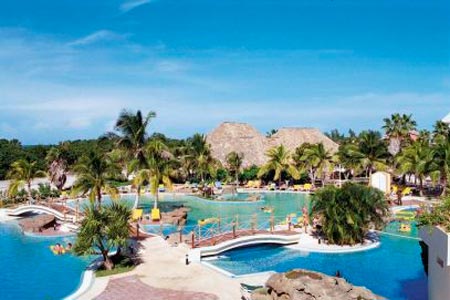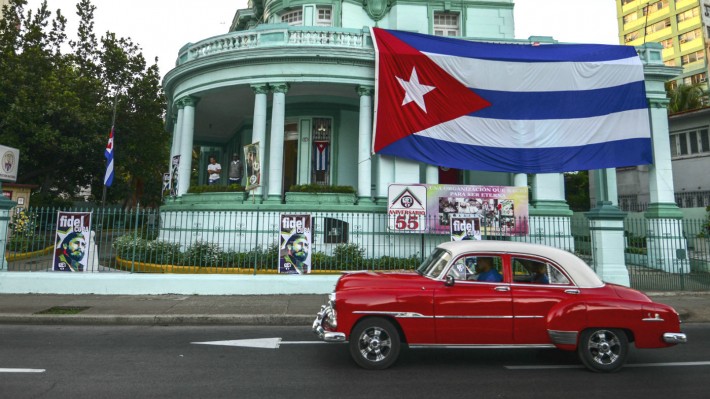
The development of the Cuban tourism industry is the government’s main focus on the island, and its impressive growth was recently solidified by Carmen Casals, director of communications of the Cuban Ministry of Tourism.
During a meeting with communicators from six Latin American countries at Havana´s José Martí International Institute of Journalism, the tourism expert predicted a promising future for Cuba tourism.
She mentioned the many changes in Cuban tourism since 1961, when it depended heavily on the United States, and after the economic barriers imposed by Washington administrations against Havana, which are still in force, the industry was seriously affected.
Cuban Tourism : The History and The Devolopment
Between 1979 and 1989, the development of new holiday resorts in Cuba started, along with the prominent one in Varadero, 140 kilometers away to the east of the Havana, and Cuba’s main recreational hub.
By the 1990s, with the collapse of the socialist camp, Cuba opened up to international tourism as an industry as well as to new investment processes.
Cuba : Rich in every aspect
A country with such an archipelago, with a 25 degree-centigrade average temperature, 11.2 million inhabitants, 800 thousand university graduates, a road network of 46 thousand kilometers, a 78-year life expectancy and 300 beaches, has many attractions, she underlined in her speech.
Nowadays, the main recreational hubs are Varadero, with 35 percent of all tourism on the island, Havana with 23, Jardines del Rey with nine percent and the eastern region of Holguín with 10 percent.
Other tourist destinations include such interesting places as the westernmost province of Pinar del Río or the southern area of Cayo Largo. Right now, officials are involved in enlarging the recreational industry by making the most of every site.
Cuba is connected by air to 39 cities in the world, by means of 90 airlines, either on regular or charter flights; ten international airports are in operation and the flow of visitors is steady.
She added that there are 3 cruise terminal stations, in Havana, the central province of Cienfuegos and Santiago de Cuba in the east. In addition there are ten international marinas, including two in Havana.
Cuba Holidays, Travel,Resorts and Hotels in an growing tourism industry
Hotel accommodation has grown significantly at a rate of 7.5 percent since 1990, and, at the moment, there are 52 thousand rooms in 334 hotels, 62 percent of them being four-and-five-star.
There is foreign participation by means of 65 managerial contracts for 28,854 rooms, through the Cuban companies Cubanacán, Gran Caribe and Gaviota.
These businesses involve 13 foreign hotel chains; among them Sol Meliá, Iberostar, Riu, Barceló, Occidentales Hoteles, Hoteles Blau and Hoteles C., welcoming travelling tourists all around the globe.
Concerning employment, tourism provides jobs for 110 thousand people, 60 percent of whom are high-school graduates and 22.3 percent university graduates; one third of them are under 35 years of age, 42.8 percent are women, and 31.5 percent are blacks and mixed.
Formatur, the tourist training system, is made up of 13 schools for upgrading, training and preparing staff, by means of different courses such as post-graduate, specialty and university training, among a large range of them.
This development makes things easier for the country´s economy, even though the U.S. economic barriers against Cuba, since 1961, have affected the sector with losses amounting to more than 22 thousand million dollars.
Cuba Tourism : Sky is the limit
Casals added that in less than three years Cuba moved to the third position as an outstanding destination in the island Caribbean, and since 1990 has welcomed 30 million tourists.
She revealed that for some years now more than two million travelers per year have been received, and that figure is expected to reach 2.7 million visitors for the first time by the end of 2011.
She mentioned Canada, the United Kingdom, Spain, Italy, Germany, France and Mexico, in that order, as the main tourist sending markets to the island.
Among her ministry´s priorities, Carmen Casals indicated, are improving marketing methods, developing the Auténtica Cuba promotion campaign, and recreational navigation.
She emphasized the importance of giving continuity to increasing the quality of the tourist product, spreading the training system and turning each hotel into a high-quality school, apart from plans for repairs and new constructions.
She also added the development of golf, the recovery of heritage facilities under the name of Hotels E (for encanto, or charm) and other projects supporting the strategy of a peaceful, healthy and safe tourism, one that protects the environment and gives prominence to culture.
[adrotate group=”10″]


